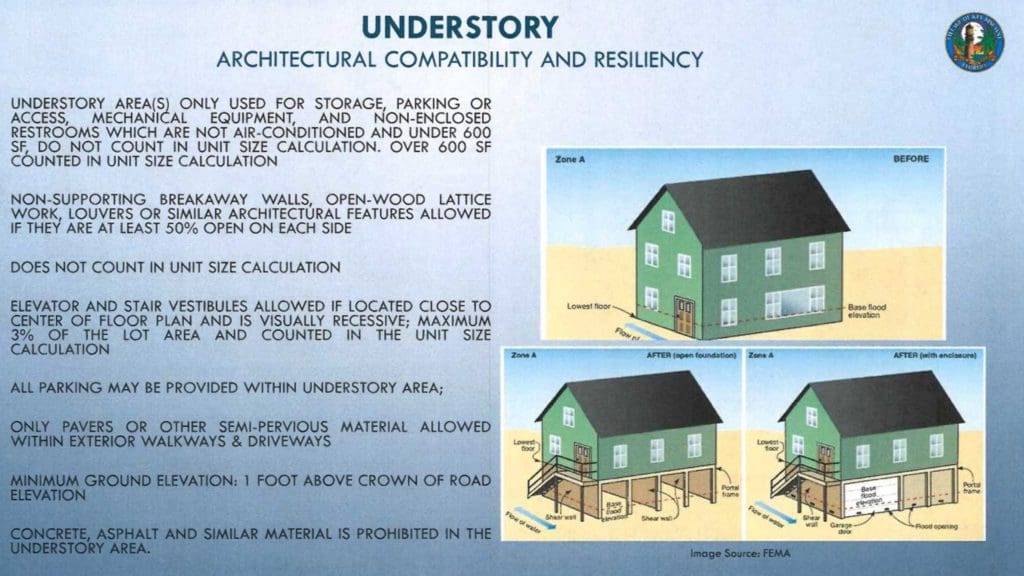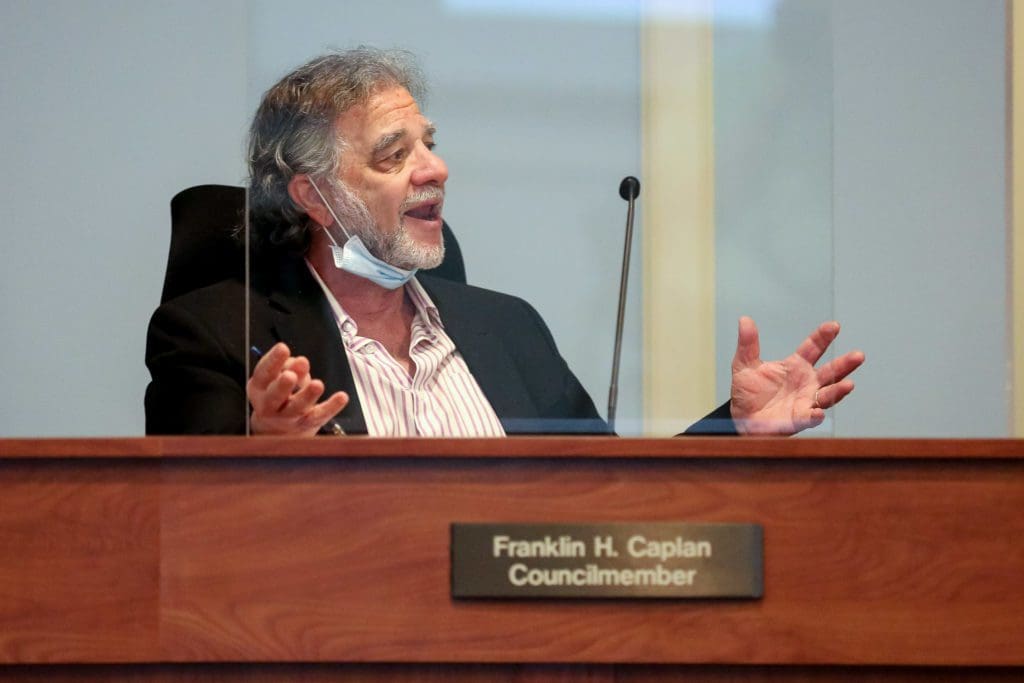Key Biscayne adopted a sweeping set of zoning changes Tuesday aimed at protecting the island from sea level rise, a move proponents hope will trigger a wave of new construction that will be higher and more resilient than current structures.
It’s believed to be among the first of its kind in Miami-Dade County, although some concepts have been adopted elsewhere. The measure passed unanimously, but not without some worry that the “look” of Key Biscayne will be forever altered, a necessary change to deal with increased flooding.
“They are pretty large changes,” said Council Member Brett Moss, an architect who led the zoning review process. He said as the changes were being discussed, they drew attention from architects and builders excited to design new structures. “There are folks I know who are going back to the drawing board,” he said. The changes were designed to retain as much of the island’s visual character as possible, Moss stressed.
The ordinance, which went into effect on adoption, creates a system of incentives for builders to manage water and save energy. It allows homes to be built on pilings, creating ground-level open areas known as “understories,” without raising the overall height restriction of 35 feet for single family homes.
Among the other changes, the legislation allows driveways and backyards to be raised, creates credits for on-site rainwater recycling facilities, and adds incentives for solar panels and rooftop gardens. Conversely, builders who choose not to add those features will face tighter limits on square footage and lot coverage.
“It kind of forces folks to look at resiliency first,” Moss said.

Roland Samimy, the Village’s chief resiliency official, said the changes are part of an incremental journey to the reality of sea level rise. “In truth, we are not ever going to get rid of the problem of water. It’s always going to be there,” he said. “We’re enabling people to deploy sustainable approaches. That’s a step in the right direction.”
The zoning changes make allowance for a future effort to raise Village roads by as much as one foot, an expensive undertaking that is contemplated by the $100 million resiliency bond, approved by voters in November.
Still, even as they cast “yes” votes, some lamented the fact that newer homes will rise higher and higher, a departure from the neighborliness of current island life. Vice Mayor Ed London worried that new structures won’t initially fit in with the dwindling number of residents still living in one-story “Mackle” homes from the island’s early days. “The Mackle people are going to say, listen, his first floor is almost my roof,” London said. “But those homes won’t be here forever. The island is changing.”
Council Member Frank Caplan agreed, saying earlier restrictions have outlived their usefulness and can be mitigated with landscaping. “This is probably an anachronism.”

Council Member Allison McCormick said the discussion about the change to the island’s culture saddened her a bit, remembering looking out her window while folding laundry.
“I saw the whole world going by. And sometimes, I could run out and talk to somebody,” she said. “The higher we go, we definitely are losing things,” she said.
One small point of controversy involved a change to allow limited use of artificial turf, an item that Moss said was suggested by Village staff and not aired in detail until Tuesday’s session. The Council agreed to allow artificial turf along a private street or right-of-way so long as it is not seen from the public right of way.
Moss said it was sought to address specific situations at Oceana and Grand Bay condominiums, but he worried the wording was too lax and could have unforeseen consequences. It was approved 4-3.
Local Nonprofit News depends on you. Won’t you invest today?
Tony Winton is the editor-in-chief of the Key Biscayne Independent and president of Miami Fourth Estate, Inc. He worked previously at The Associated Press for three decades winning multiple Edward R. Murrow awards. He was president of the News Media Guild, a journalism union, for 10 years. Born in Chicago, he is a graduate of Columbia University. His interests are photography and technology, sailing, cooking, and science fiction.



